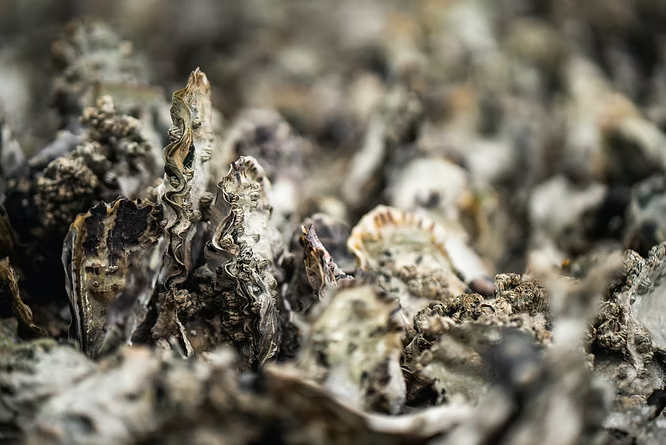Introduction
The American oyster (Crassostrea virginica) is an iconic species native to the Chesapeake Bay and the coastal waters of eastern North America. Once so abundant that their massive reefs became navigation hazards, these oysters have seen dramatic population declines. Overharvesting, habitat destruction, and pollution have reduced their numbers to as low as one percent of historical levels in some regions.
Lifestyle and Reef Formation
Like all true oysters, the American oyster leads a sessile lifestyle. After a brief planktonic phase, juveniles settle permanently onto hard surfaces, often the shells of older oysters, and begin secreting calcium carbonate to build protective shells. Over time, this behavior results in extensive reefs that provide critical habitat for a wide variety of fish and invertebrates.
These oysters are efficient filter feeders, straining plankton and organic material from surrounding waters. A single adult can filter up to 50 gallons of water per day. In dense populations, they once played an essential role in maintaining water clarity and overall ecosystem health.
Reproductive Strategy
American oysters reproduce via broadcast spawning, releasing eggs and sperm simultaneously into the water. This synchronized behavior increases the chances of successful fertilization while reducing the risk of predation on eggs near the reef surface.
A single female can produce up to 150 million eggs over her lifetime. Interestingly, oysters begin life as males, and many later transition to females as they grow larger. This sex change reflects the differing energy demands of producing sperm versus eggs: smaller oysters allocate resources to sperm production while larger, more mature individuals shift to egg production. Temperature changes in the water often serve as the trigger for spawning events.
Decline and Environmental Impact
For more than a century, the American oyster has been heavily overexploited. The Chesapeake Bay fishery peaked in the 1880s, and by the early 1900s, populations were already in steep decline. Today, harvest levels are only about one percent of those historic peaks.
This decline has transformed the Bay ecosystem. Once, vast oyster reefs filtered the entire bay’s water in a matter of days. With their populations reduced, water quality has suffered, and pollution has intensified without the natural filtration service oysters once provided.
Although extinction is unlikely due to their wide distribution and high reproductive output, the species remains severely depleted throughout its range. The loss of reef structure and filtration capacity continues to impact marine biodiversity and water quality, underscoring the ecological importance of restoration efforts.
Conclusion
The American oyster stands as both a symbol of ecological abundance and a cautionary tale of overexploitation. Restoring its populations is critical not only for sustaining fisheries but also for reviving the health and resilience of coastal ecosystems like the Chesapeake Bay.

